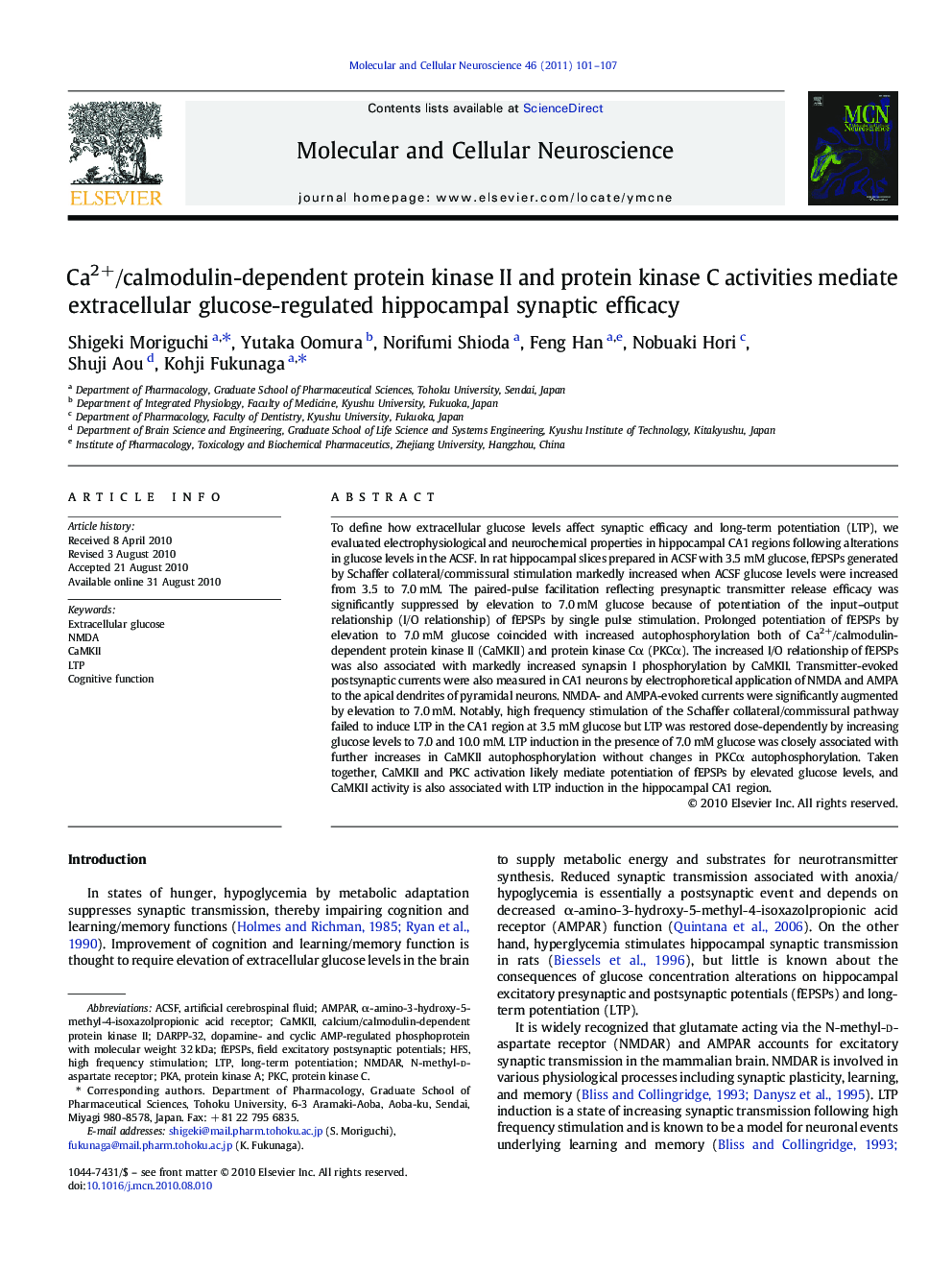| Article ID | Journal | Published Year | Pages | File Type |
|---|---|---|---|---|
| 10956628 | Molecular and Cellular Neuroscience | 2011 | 7 Pages |
Abstract
To define how extracellular glucose levels affect synaptic efficacy and long-term potentiation (LTP), we evaluated electrophysiological and neurochemical properties in hippocampal CA1 regions following alterations in glucose levels in the ACSF. In rat hippocampal slices prepared in ACSF with 3.5 mM glucose, fEPSPs generated by Schaffer collateral/commissural stimulation markedly increased when ACSF glucose levels were increased from 3.5 to 7.0 mM. The paired-pulse facilitation reflecting presynaptic transmitter release efficacy was significantly suppressed by elevation to 7.0 mM glucose because of potentiation of the input-output relationship (I/O relationship) of fEPSPs by single pulse stimulation. Prolonged potentiation of fEPSPs by elevation to 7.0 mM glucose coincided with increased autophosphorylation both of Ca2+/calmodulin-dependent protein kinase II (CaMKII) and protein kinase Cα (PKCα). The increased I/O relationship of fEPSPs was also associated with markedly increased synapsin I phosphorylation by CaMKII. Transmitter-evoked postsynaptic currents were also measured in CA1 neurons by electrophoretical application of NMDA and AMPA to the apical dendrites of pyramidal neurons. NMDA- and AMPA-evoked currents were significantly augmented by elevation to 7.0 mM. Notably, high frequency stimulation of the Schaffer collateral/commissural pathway failed to induce LTP in the CA1 region at 3.5 mM glucose but LTP was restored dose-dependently by increasing glucose levels to 7.0 and 10.0 mM. LTP induction in the presence of 7.0 mM glucose was closely associated with further increases in CaMKII autophosphorylation without changes in PKCα autophosphorylation. Taken together, CaMKII and PKC activation likely mediate potentiation of fEPSPs by elevated glucose levels, and CaMKII activity is also associated with LTP induction in the hippocampal CA1 region.
Keywords
Related Topics
Life Sciences
Biochemistry, Genetics and Molecular Biology
Cell Biology
Authors
Shigeki Moriguchi, Yutaka Oomura, Norifumi Shioda, Feng Han, Nobuaki Hori, Shuji Aou, Kohji Fukunaga,
